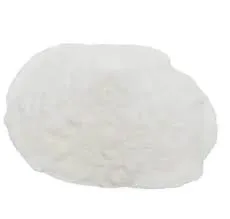
Jul . 27, 2024 11:02 Back to list
Overview of the Hydroxyethyl Cellulose Production Process and Its Key Steps in Manufacturing
Manufacturing Process of Hydroxyethyl Cellulose
Hydroxyethyl cellulose (HEC) is a water-soluble polymer derived from cellulose, which is extensively used in various applications including pharmaceuticals, cosmetics, construction, and food products. The manufacturing process of HEC involves several critical steps, beginning with the selection of raw materials and culminating in the purification and formulation of the final product.
1. Raw Material Selection
The primary raw material for the production of hydroxyethyl cellulose is cellulose, typically sourced from wood pulp or cotton linter. The purity and source of cellulose are essential, as they significantly influence the quality of the final product. Additional reagents are also required, including ethylene oxide and alkaline catalysts, which facilitate the hydroxyethylation reaction.
2. Cellulose Activation
The first step in the manufacturing process involves the activation of cellulose. This is achieved by dissolving the cellulose in an alkaline solution, often sodium hydroxide. This treatment causes the cellulose fibers to swell, increasing their reactivity and preparing them for subsequent chemical modification. The degree of activation influences the efficiency of the hydroxyethylation process.
3. Ethylene Oxide Reaction
Once the cellulose is activated, the hydroxyethylation reaction can take place. Ethylene oxide is added to the activated cellulose under controlled conditions, typically in a closed reactor system. The reaction occurs at elevated temperatures and pressures to ensure that the ethylene oxide effectively reacts with the hydroxyl groups of cellulose, resulting in the substitution of hydroxyethyl groups into the cellulose backbone. The reaction time, temperature, and ratio of reagents are meticulously controlled to achieve the desired degree of substitution, which influences the solubility and viscosity of the final product.
hydroxyethyl cellulose manufacturing process

4. Neutralization and Precipitation
After the reaction, the resulting hydroxyethyl cellulose solution must be neutralized to remove any unreacted ethylene oxide and alkaline residues. This step is critical for ensuring safety and product quality. Typically, an acid, such as hydrochloric acid, is added to adjust the pH of the solution. Following neutralization, the HEC is precipitated out of the solution, usually by adding a non-solvent such as alcohol or acetone. This step separates the HEC product from soluble impurities and residual reactants.
5. Purification and Drying
The precipitated hydroxyethyl cellulose is then washed to remove any remaining impurities or solvent residues. This is usually done using water or organic solvents. Once purified, the cellulose is dried, commonly in a vacuum dryer or rotary evaporator, to obtain a free-flowing powder. The drying process must be carefully executed to avoid degradation of the hydroxyethyl groups and to maintain the polymer's characteristics.
6. Milling and Quality Control
The dried hydroxyethyl cellulose is then milled to achieve the desired particle size. This step is crucial for ensuring uniformity in application and dissolution properties. Quality control tests are conducted throughout the manufacturing process to assess parameters such as viscosity, degree of substitution, and moisture content. Adhering to stringent quality control measures ensures that the final product meets industry specifications and performance standards.
Conclusion
In summary, the manufacturing process of hydroxyethyl cellulose involves the careful selection of raw materials, chemical modification through hydroxyethylation, purification, and rigorous quality control. The versatility and functionality of HEC make it a valuable ingredient across various industries, and the precision in its production is essential for its performance in end applications. The continuous development of more efficient production methods and sustainability practices remains a focus in the hydroxyethyl cellulose manufacturing landscape.
-
Versatile Hpmc Uses in Different Industries
NewsJun.19,2025
-
Redispersible Powder's Role in Enhancing Durability of Construction Products
NewsJun.19,2025
-
Hydroxyethyl Cellulose Applications Driving Green Industrial Processes
NewsJun.19,2025
-
Exploring Different Redispersible Polymer Powder
NewsJun.19,2025
-
Choosing the Right Mortar Bonding Agent
NewsJun.19,2025
-
Applications and Significance of China Hpmc in Modern Industries
NewsJun.19,2025







